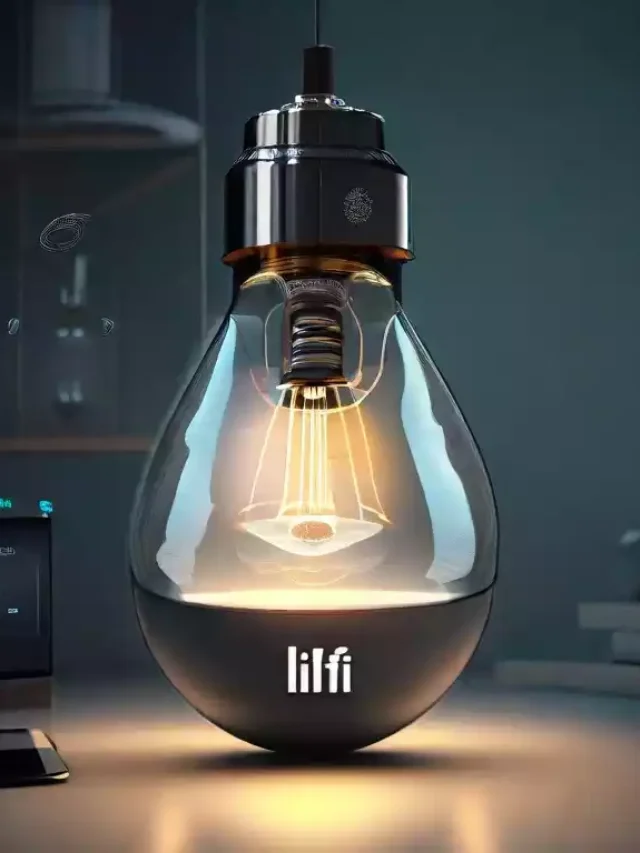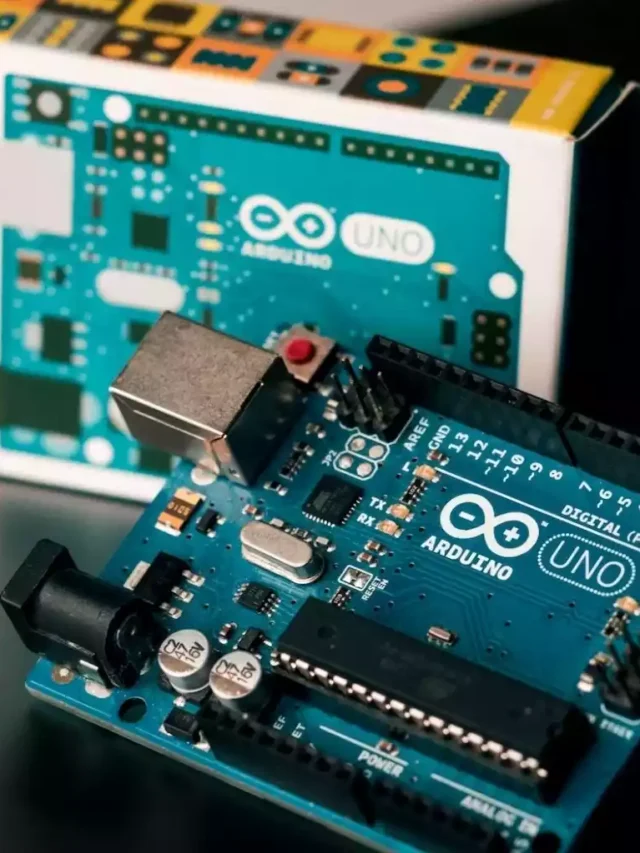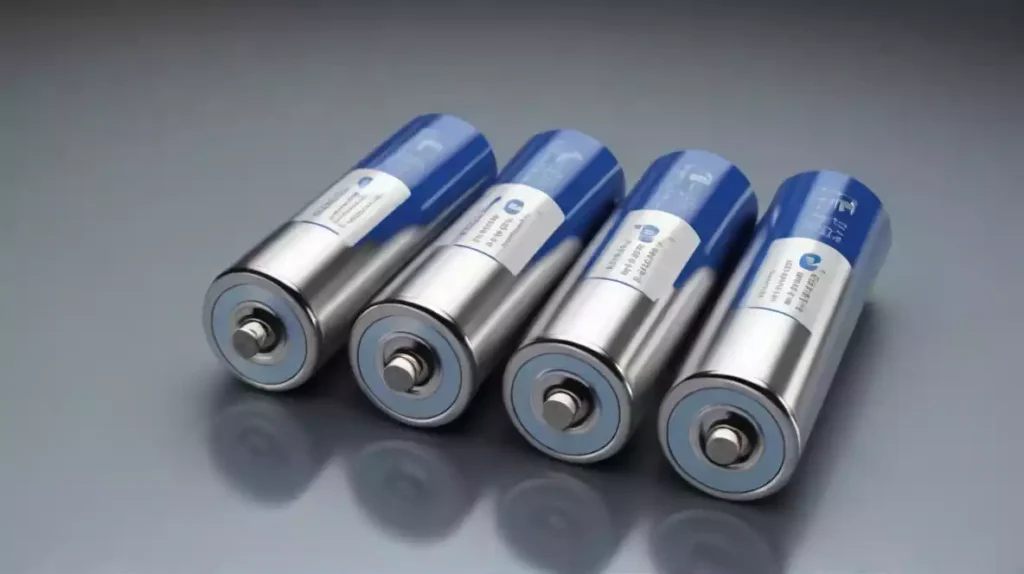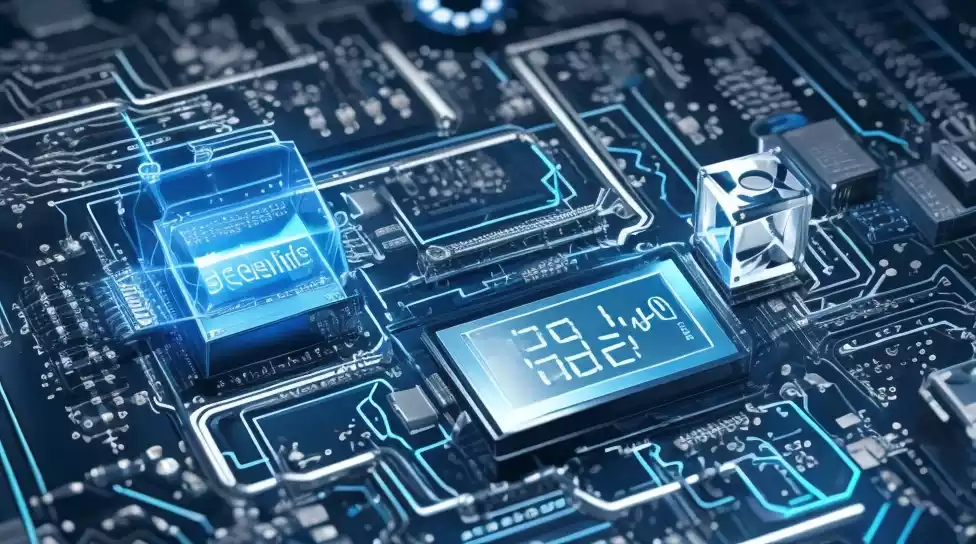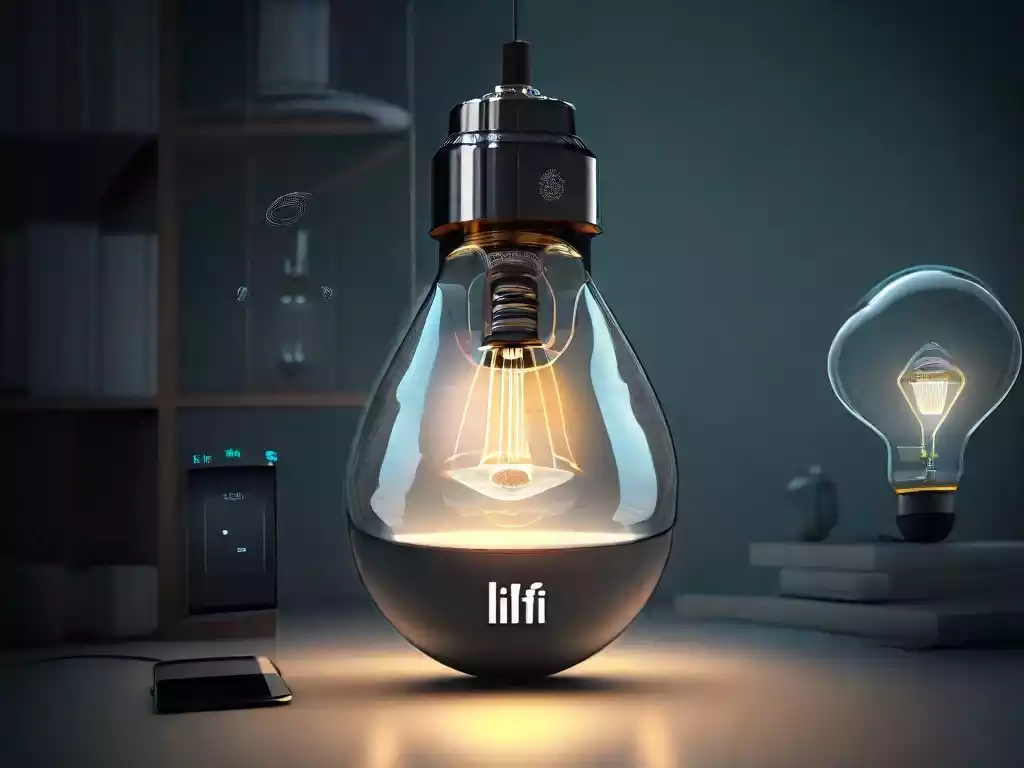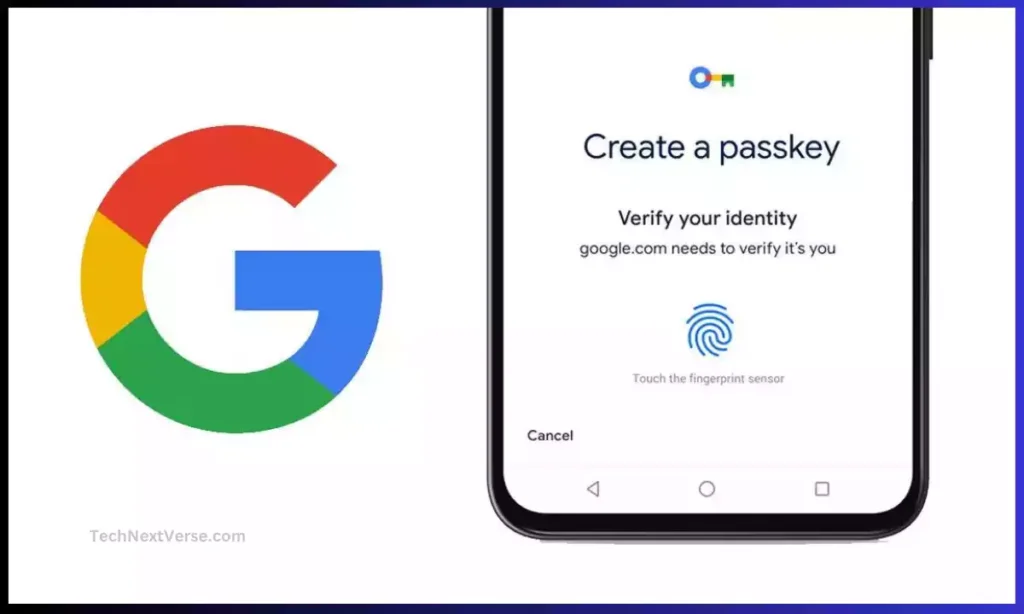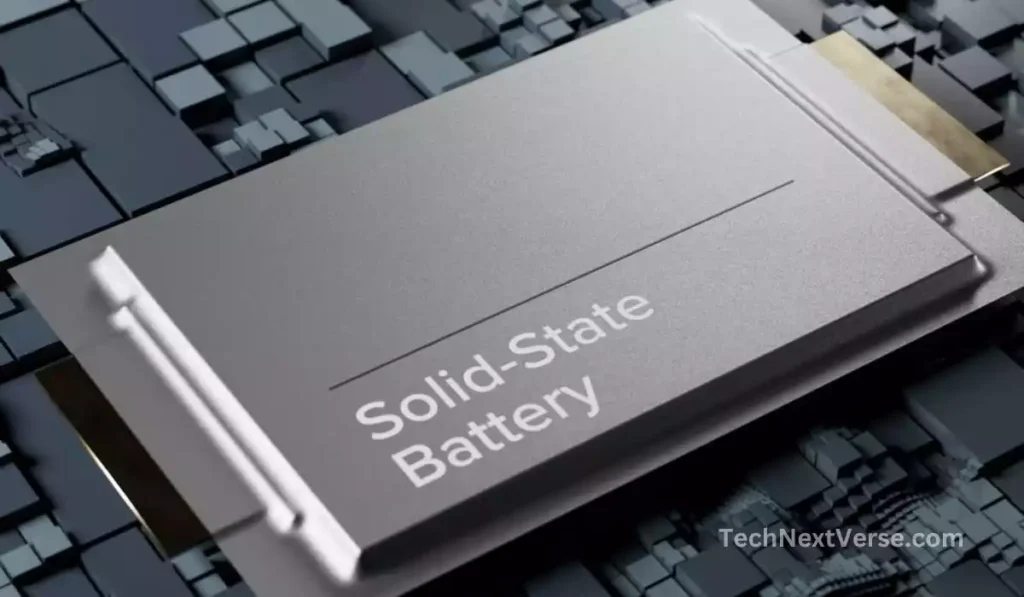
Batteries power our lives, from phones to cars. But regular batteries have problems. They can overheat or even catch fire. And they run out of juice too quickly. Now, new battery technology “solid-state batteries” are being created.
They use solid materials, not liquids, inside the battery. This makes them safer. It also gives them more power and longer life. Solid state batteries could let electric cars drive much farther before needing a charge.
Some companies are racing to perfect solid state batteries. They hope to have them ready within 5-10 years. This new battery tech could change how we power the devices and vehicles of the future.
How does a solid state battery work ?
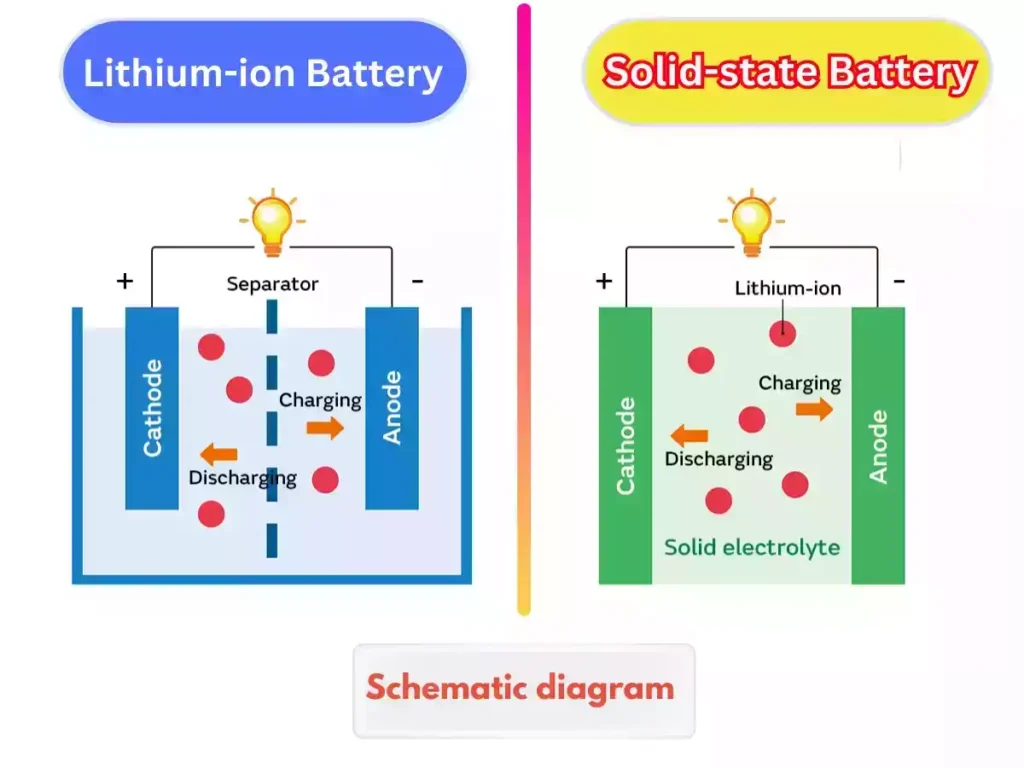
The working principle of Solid-state battery
● Electrolyte :
The electrolyte in a solid -state battery is a solid material rather than the liquid or polymer gel used in conventional lithium-ion batteries. Solid electrolytes can conduct lithium ions between the electrodes while preventing electron flow.
Some key points about solid-state battery electrolytes:
- They are typically ceramic or polymeric materials that ions can pass through while remaining solid. Common materials used include lithium phosphorus oxynitride (LiPON), lithium lanthanum titanate (LLTO), and sulfide-based ceramics.
- Using a solid electrolyte eliminates the risk of leaks or flammability issues associated with liquid electrolytes. This makes solid-state batteries intrinsically safer.
- The solid electrolyte enables the use of lithium metal anodes, rather than graphite used in lithium-ion batteries. This increases energy density dramatically.
- Solid electrolytes have high mechanical strength and act as a barrier between the electrodes, preventing dendrite growth that can lead to short circuits.
- Challenges include finding solid electrolyte materials with high ionic conductivity while maintaining structural stability. Research is ongoing to optimize solid electrolytes.
- Common solid electrolyte fabrication methods include thin film deposition techniques like sputtering as well as solution-based processing. This allows tuning of properties.
● Electrodes :
Solid-state batteries utilize solid electrodes (Anode, Cathode) made of materials that can store lithium ions, such as lithium metal, lithium alloys or composites.
● Charge/Discharge :
During charging, lithium ions flow from the positive electrode to the negative electrode through the solid electrolyte. This stores energy in the battery. During discharge, the lithium ions flow back to power the device.
They also have the potential for 2-3 times the energy density of lithium-ion batteries. Let’s explore why this technology could unlock better energy storage.
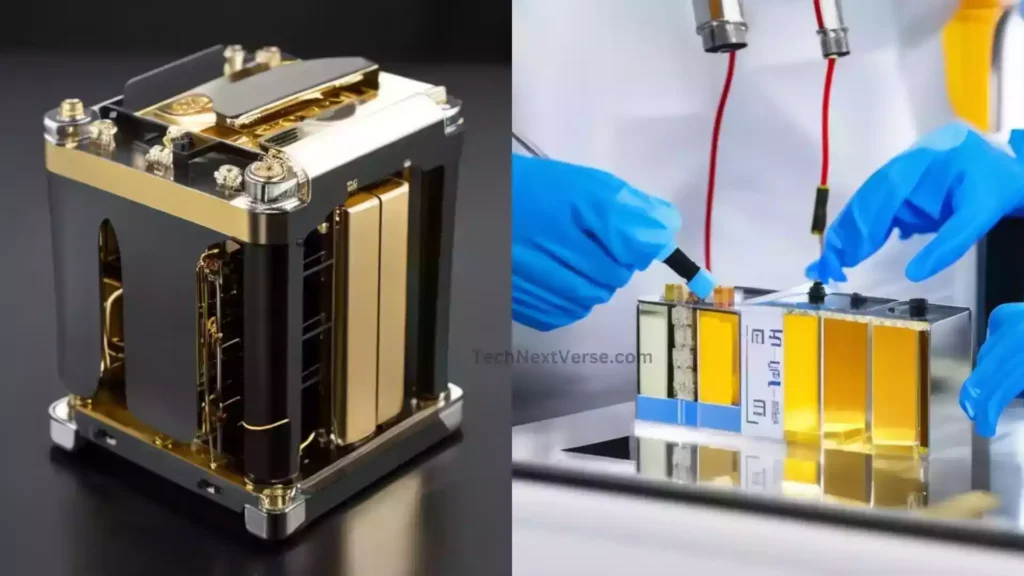
What are the components of a solid state battery ?
- Cathode – The positive electrode that accepts lithium ions, typically made from lithium metal oxides like lithium cobalt oxide (LiCoO2) or lithium iron phosphate (LiFePO4).
- Anode – The negative electrode that provides lithium ions, typically made from lithium metal rather than graphite used in lithium-ion batteries.
- Solid electrolyte – The solid ceramic or polymeric material that allows lithium ion conduction between the electrodes, such as lithium phosphorus oxynitride (LiPON).
- Current collectors – Thin metal foils, typically copper for the anode and aluminum for the cathode, that collect current from the electrodes.
- External case – The protective and insulating casing that houses all the battery components, often made from metals like stainless steel or aluminum.
- Electrolyte additives – Added materials in the solid electrolyte that improve conductivity, stability, or other properties.
- Separators – Porous plastic sheets used to prevent electrical contact between the anode and cathode. Not always needed with solid electrolytes.
- Binders and fillers – Polymers and inactive materials added to glue the electrolyte and electrode materials together.
Another new promising battery technology : Fluoride ion Battery
Advantages of Solid-State Batteries
● Increased Safety :
With no flammable liquids, solid-state batteries are less prone to overheating, catching fire or exploding. This makes them ideal for electric vehicles and other applications where safety is critical.
● Higher Energy Density :
Solid-state battery can theoretically store more energy per unit volume than conventional lithium-ion batteries. Some prototypes have demonstrated nearly 500 Wh/L versus the typical 250-300 Wh/L for lithium-ion cells.
● Longer Lifespan :
The solid components do not degrade as quickly over charge/discharge cycles. This gives solid-state batteries exceptional cycle life of potentially thousands of cycles.
● Faster Charging :
Improved ion conductivity enables rapid charging, transforming the user experience.
● Lower Costs :
The simplified solid construction lends itself to lower cost manufacturing. The batteries require less safety components and thermal management systems as well.
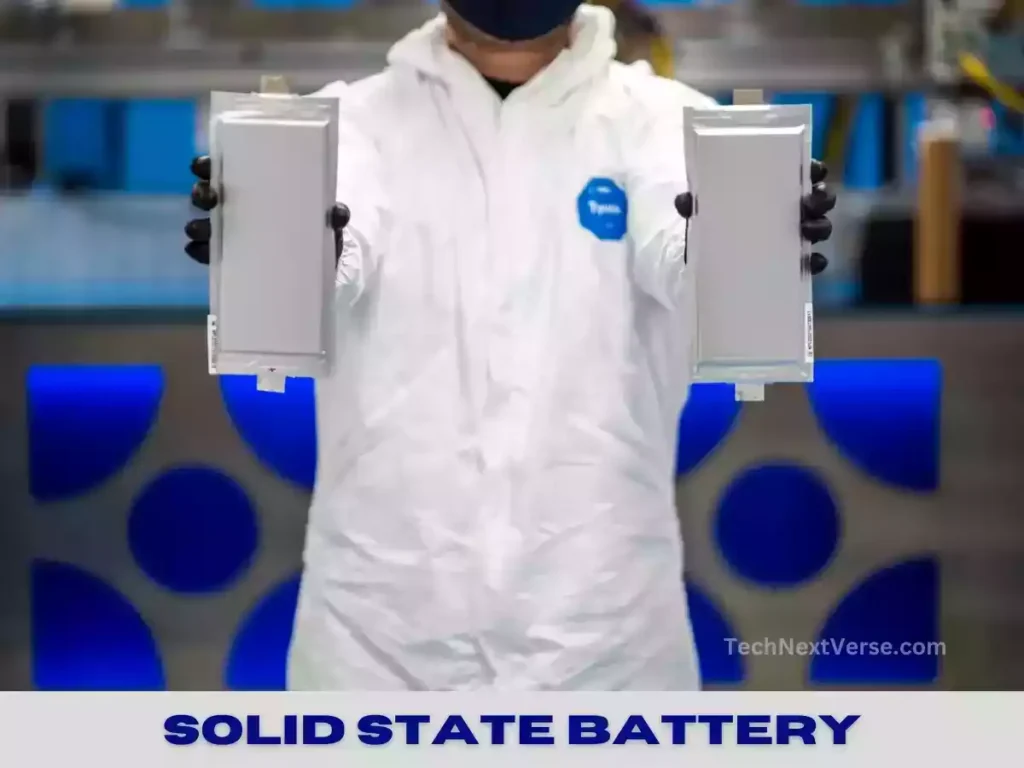
Disadvantages and Challenges
● Performance Limitations :
Conductivity and performance of solid electrolytes continue to lag behind liquid counterparts. More research is needed.
● Manufacturing Difficulties :
Large-scale manufacturing of solid-state battery faces complications. New equipment and processes must be developed and refined.
● Temperature Sensitivity :
Some solid electrolytes require elevated temperatures for optimal performance.
● High Costs Currently :
Solid-state battery costs are prohibitively high for widespread adoption. Costs must come down considerably. Initial costs associated with research and development contribute to the overall price of solid-state batteries.
Read Also :
Current Applications and Developments
While still in the research and development phase, solid-state battery is making their way into niche applications like medical devices and wearable technology. Researchers and companies are working to refine the technology for broader use.
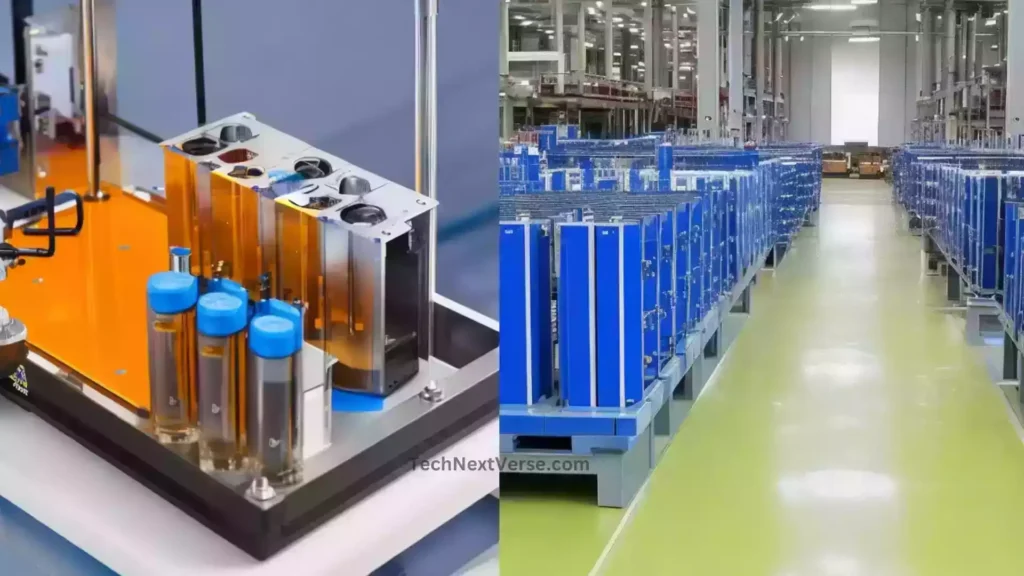
1. The Role of Materials Science :
Materials science plays a crucial role in the development of solid-state batteries. Researchers are exploring novel materials to improve ion conductivity and overall battery performance.
2. Potential Impact on Renewable Energy :
Solid-state batteries could facilitate the storage of excess energy generated by renewable sources like solar and wind, aiding in grid stabilization and reducing reliance on fossil fuels during peak demand.

3. Environmental Impact :
The longer lifespan and reduced risk of failure associated with solid-state batteries could lead to a decrease in electronic waste, contributing to a more sustainable future.
4. Solid-State Batteries in Electric Vehicles :
The automotive industry could see a transformation with the adoption of solid-state batteries. These batteries offer higher energy density and longer ranges, addressing key limitations of electric vehicles.

Toyota solid state battery
Toyota has been actively developing solid-state batteries for electric vehicles, and they have made several announcements regarding their progress :
- 2020 Prototype Reveal : In 2020, Toyota displayed a prototype solid-state battery during a media briefing. They claimed it had nearly 2x the energy density of conventional lithium-ion batteries.
- 2021 Rechargeable Prototype : In 2021, Toyota said they had succeeded in developing a solid-state battery prototype that could be recharged repeatedly. This helped demonstrate the feasibility of the technology.
- 2025 Production EV Target : In 2022, Toyota announced they plan to unveil a working solid-state battery electric vehicle prototype in 2025. The company sees solid-state batteries as ideal for long-range EVs.
- Current Prototype Production : Toyota currently has a prototype production line making solid-state batteries at a rate of 10 batches per week. They aim to eventually scale up to mass production.
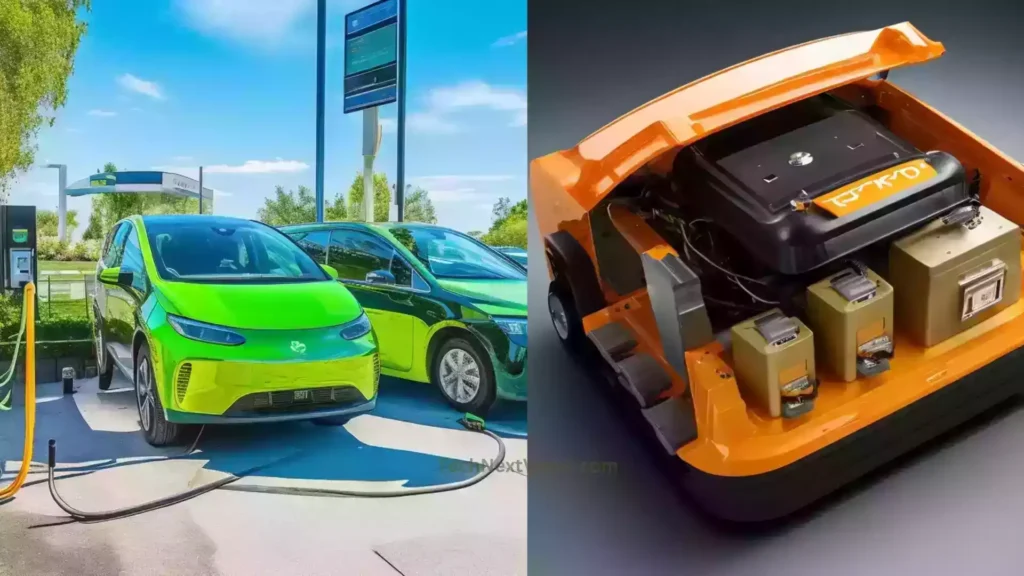
Technical Details of Toyota’s Solid-State Innovation
- Fluoride Ion Solid Electrolyte – Toyota’s solid-state battery utilizes an innovative fluoride ion-conducting solid electrolyte material.
- Dual Layer Lithium Metal Electrodes – The electrodes use a dual layer lithium metal configuration to optimize performance.
- Ideal for EVs – Toyota is tailoring their solid-state batteries for automotive
applications, targeting range, safety and cycle life.
So while Toyota has not yet commercialized a solid-state battery for sale in vehicles, the company does appear to have functioning solid-state battery technology in development. Toyota’s announcements and timeline suggest they are making steady progress toward bringing solid-state battery electric vehicles to market, though likely not until around 2025 or beyond. Other automakers like BMW and Volkswagen are also developing solid-state batteries, but Toyota seems to be among the leaders currently.

Conclusion
Solid-state batteries offer an exciting pathway to better energy storage through increased safety, energy density, lifespan and potentially lower costs. While challenges remain in manufacturing and improving performance, the technology could realistically be commercialized within the next 5-10 years. If solid-state batteries can reach their full potential, they could truly transform electric transport, electronics and energy storage at grid scale. An investment in research to perfect solid-state technology seems likely to yield the next battery breakthrough the world needs.
FAQs
-
How do solid-state battery differ from lithium-ion batteries?
Ans : Solid-state batteries utilize a solid electrolyte instead of a liquid or polymer gel electrolyte. They also use solid electrodes.
-
What is the electrolyte in a solid-state battery?
Ans : The electrolyte in a solid-state battery is a solid material, rather than the liquid or gel electrolytes used in conventional lithium-ion batteries.
They are typically ceramic or polymeric materials that ions can pass through while remaining solid. Common materials used include lithium phosphorus oxynitride (LiPON), lithium lanthanum titanate (LLTO), and sulfide-based ceramics.
-
What are the components of a solid state battery?
Ans : The main components of a solid-state battery are:
● Cathode – The positive electrode that accepts lithium ions, typically made from lithium metal oxides like lithium cobalt oxide (LiCoO2) or lithium iron phosphate (LiFePO4).
● Anode – The negative electrode that provides lithium ions, typically made from lithium metal rather than graphite used in lithium-ion batteries.
● Solid electrolyte – The solid ceramic or polymeric material that allows lithium ion conduction between the electrodes, such as lithium phosphorus oxynitride (LiPON).
-
Can i buy a solid state battery?
Ans : Solid state batteries are not yet commercially available for widespread consumer purchase. The technology is still in the research and development stage, with companies racing to be the first to bring it to market.
-
When will solid-state batteries be available?
Ans : Most experts estimate viable commercialization within 5-10 years if remaining challenges can be overcome. Toyota will be delivered solid state battery to the market by 2027–2028 years.
-
Do solid-state batteries contain lithium?
Ans : Yes, most solid-state battery designs do contain lithium in some form.
● The anode is typically made from lithium metal, which provides high energy density compared to graphite anodes used in lithium-ion batteries.
● The cathode often contains a lithium metal oxide such as lithium cobalt oxide (LiCoO2) or lithium iron phosphate (LiFePO4). This delivers the lithium ions that intercalate into the anode. -
How long will a solid-state battery last?
Ans : Most of the estimates predict solid-state batteries will maintain over 80% of their original capacity after 10,000-15,000 charge/discharge cycles. This is 2-3 times longer than lithium-ion batteries.
-
What is the strongest battery in the world?
Ans : Here are some of the strongest battery technologies in the world right now :
● Lithium-air and lithium-sulfur chemistries offer extremely high energy densities but have not been commercialized yet.
● Solid-state and silicon nanowire batteries are very promising technologies being researched intensively now for nearer-term deployment.
-
What is a quantum glass battery?
Ans : Ans : A quantum glass battery is a new battery technology proposed by researchers at the University of Michigan. It uses a glass electrolyte infused with special metal ions that are designed to interact quantum mechanically.
